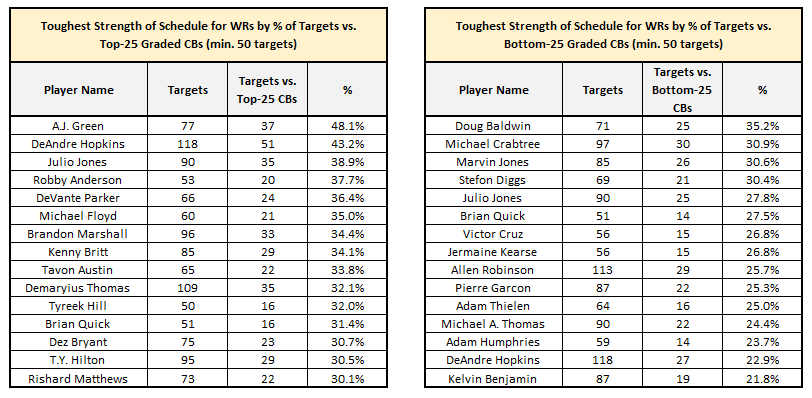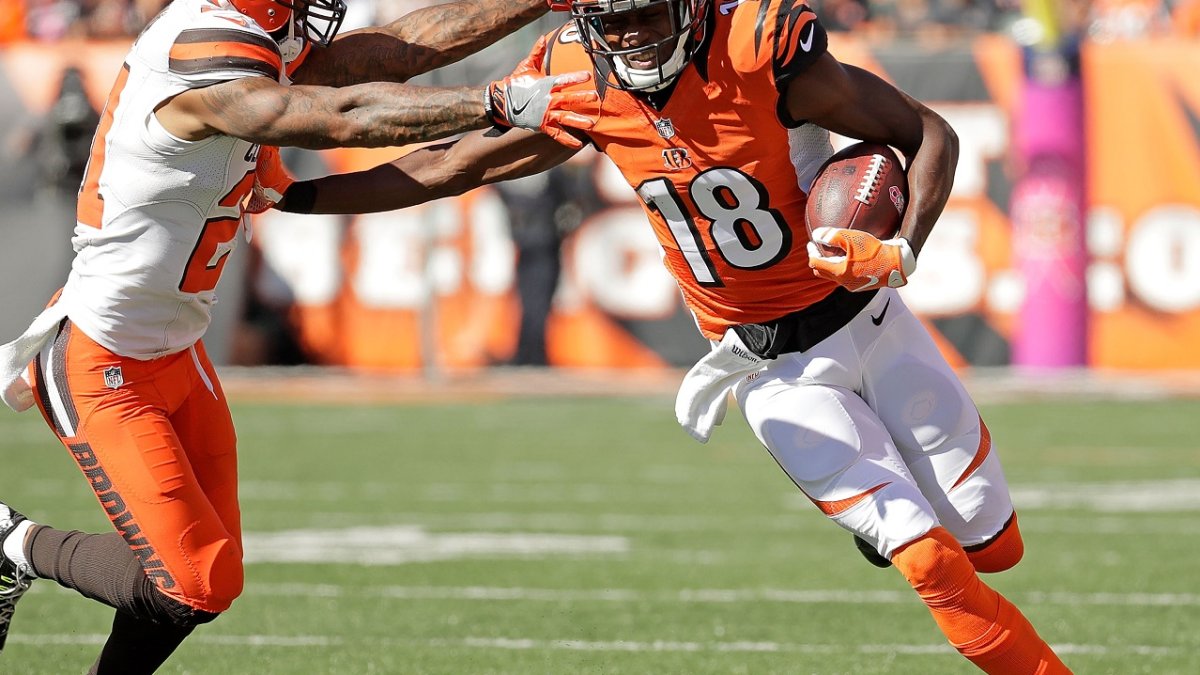All wide receiver efficiency metrics can be improved on. There are two notable components missing to the context of any of your favorite wide receiver efficiency metrics: 1) The talent level of the quarterback throwing them the ball, and 2) The talent level of the defensive player covering them on each target. The former component, we already covered here. The latter is what we’ll be focusing on today.
Take, for instance, Chris Harris Jr. Outside of one game against Antonio Brown, Denver’s slot cornerback has been as islandic as Darrelle Revis in his prime. Against 132 different wide receivers, Harris has been thrown at 391 times in his 95 career games. Only two cornerbacks have played on more snaps than Harris over the past five seasons. Still, only seven wide receivers have ever caught a touchdown pass against him. Only four wide receivers have ever totaled more than 50 yards in a game against Harris, and only Brown saw more than 85 in one game. Across his career, wide receivers average just 1.28 PPR fantasy points per target against him. Last season, there were 96 different wide receivers who saw at least 40 targets. Only one of them, Tavon Austin, averaged less than 1.28 fantasy points per target (1.26). Harris has the uncanny ability of taking your team’s elite slot receiver and making him look, well, almost as bad as Tavon Austin.
Neglecting Harris’s dominance when making a start/sit decision in redraft leagues, or even worse, in DFS, can prove to be a costly mistake. On the other side of the coin, poor cornerback play can help elevate an average wide receiver to near elite heights. Take for instance, Quinten Rollins’ abysmal 2016 season, when he allowed 2.42 fantasy points per target on 70 targets. Among the same 96 wide receivers who saw at least 40 targets last season, Rollins’ 2.42 fantasy points per target would have ranked behind only Taylor Gabriel’s 2.80. Or think back to Antwon Blake’s 2015 season, when Doug Baldwin, A.J. Green, Amari Cooper, Michael Floyd, and Kamar Aiken combined to put up 463 yards, five touchdowns, and over 100 fantasy points against Blake on just 32 targets. The 14.46 fantasy points per game he allowed that season would have ranked 17th among all wide receivers this year – ahead of Amari Cooper, Demaryius Thomas, and Julian Edelman.
Over the past 10 seasons, wide receivers average 1.74 fantasy points per target. Against top-25-graded cornerbacks, that drops to 1.45. Against bottom-25-graded cornerbacks, that climbs to 1.90.
Examining cornerback play in the context of fantasy wide receiver efficiency continues to be one of the most important, and yet, least heralded components of fantasy football strategy. PFF continues to be at the forefront of this from a week-to-week perspective, with Jeff Ratcliffe’s Shadow Matrix and WR vs. CB Chart, but season-long analysis from this perspective has lagged behind. Until now.
By breaking down a wide receiver’s targets by percentage against PFF’s top-25 and bottom-25 cornerbacks, we can help identify undervalued options or players due for regression based on 2016 strength of schedule. Here they are:

Exclusive content for premium subscribers

WANT TO KEEP READING?
Dominate Fantasy Football & Betting with AI-Powered Data & Tools Trusted By All 32 Teams
Already have a subscription? Log in



 © 2025 PFF - all rights reserved.
© 2025 PFF - all rights reserved.